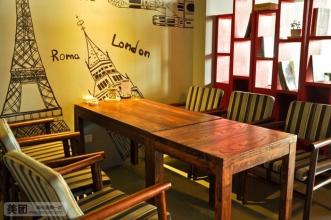Introduction to the description Price of the Flavor of Dominica Coffee varieties
The earliest coffee in Dominica was introduced from Martinique (the overseas province of France), dating back to the early 18th century. Dominica is an island country with a tropical climate, with little change in temperature throughout the year. Except for the lower temperature in the Central Cordillera Mountains, which can reach less than 0 ℃ in winter, the average annual temperature in other areas is between 25 and 30 ℃, while affected by the mountain topography, the north and east face the northeast trade wind with an annual precipitation of 1500-2500 mm, which belongs to tropical maritime climate. The mountain forest is dense, the leeward southwest annual precipitation is 500-1000 mm, the dry season is long, belongs to the savanna climate.
The temperate climate in Dominica is conducive to coffee cultivation, and the best places to grow coffee are the Barahona region in the southwest and the Cibao Valley north of Santiago, Dominica's second largest city. The northern region, represented by Hibao, and the southern region, including Okayabani Santo Domingo, produce good coffee. Among them, the coffee produced by Santo Domingo and Barney is world-famous and is almost synonymous with domiga coffee.
Dominica-White Beach and Black Coffee
Coffee in Dominica varies slightly in taste according to the altitude of the region where it is grown, with sour but rich taste in the highlands, and less sour and smoother taste in the lowlands. The high-quality coffee beans produced by some Dominican estates have a rich aroma, mellow taste and moderately bright sour taste, and are often compared with those from Puerto Rico or Jamaica.

Important Notice :
前街咖啡 FrontStreet Coffee has moved to new addredd:
FrontStreet Coffee Address: 315,Donghua East Road,GuangZhou
Tel:020 38364473
- Prev

Puerto Rican Coffee Flavor description characteristics of Grinding degree introduction to the taste of varieties in producing areas
Puerto Rico's new farm coffee is a mild, supple and well-balanced island bean with a charming single malt flavor, extremely sweet when sipped in a cup, and medium-roasted creamy and greasy texture that is often suitable for Puerto Rico island beans. Product description: the whole history of Caribbean coffee has a lot to do with Spanish reclamation, which was in the 18th century.
- Next

Introduction of Panamanian Cupid Coffee Flavor description, Grinding degree and Taste production area
At the beginning of the 16th century, Panama became a Spanish colony, and by 1821, Panama was one of the Spanish colonies in America. In 1821 Panama joined the Greater Columbia Republic established by Simon Bolivar. In 1830, the Union split and Panama became a member of Colombia.
Related
- Detailed explanation of Jadeite planting Land in Panamanian Jadeite Manor introduction to the grading system of Jadeite competitive bidding, Red bid, Green bid and Rose Summer
- Story of Coffee planting in Brenka region of Costa Rica Stonehenge Manor anaerobic heavy honey treatment of flavor mouth
- What's on the barrel of Blue Mountain Coffee beans?
- Can American coffee also pull flowers? How to use hot American style to pull out a good-looking pattern?
- Can you make a cold extract with coffee beans? What is the right proportion for cold-extracted coffee formula?
- Indonesian PWN Gold Mandrine Coffee Origin Features Flavor How to Chong? Mandolin coffee is American.
- A brief introduction to the flavor characteristics of Brazilian yellow bourbon coffee beans
- What is the effect of different water quality on the flavor of cold-extracted coffee? What kind of water is best for brewing coffee?
- Why do you think of Rose Summer whenever you mention Panamanian coffee?
- Introduction to the characteristics of authentic blue mountain coffee bean producing areas? What is the CIB Coffee Authority in Jamaica?

